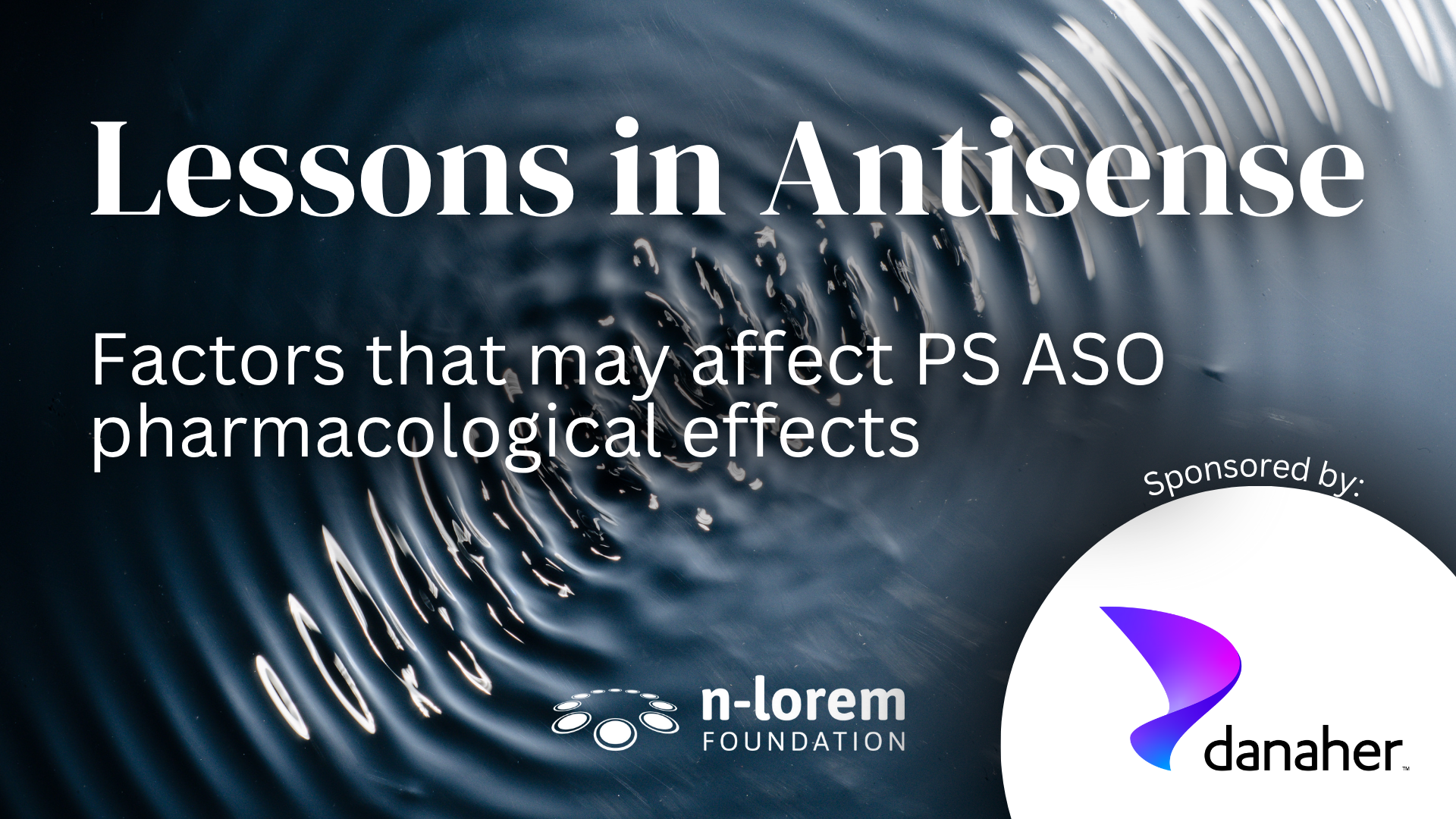Lessons in Antisense
Lesson 12 – Factors that may affect PS ASO pharmacological effects
July 7, 2025 by Dr. Stan Crooke

Introduction
ASOs are pharmacologically active chemicals. This means that the effects observed on the phenotypes of cells may be influenced by many factors. For small molecules designed to bind to protein receptors, receptor number, post-translational modifications of the receptor, the site in the receptor to which a small molecule drug binds (agonist binding site or allosteric site), receptor coupling to signaling processes, and many other factors may influence drug activities. Similarly, for ASOs, many factors can influence their effects, and many of these factors are similar to those that affect small molecule drug activities.

RNA copy number
To study this, we developed an inducible system that allowed us to control the number of copies of an RNA target in the cell. Subsequently, we showed similar potencies for RNAs much more abundant than mRNAs, including ribosomal RNA, snRNAs, tRNAs, and circular RNAs.
This can be rationalized by considering the typical D+R+=Product equation. If the number of ASO molecules is greater than the RNA, then the target RNA concentration is irrelevant.
Basal transcription rate
Except for very rapidly transcribed genes like Myc, transcription appears not to affect activity. The one other exception is the mechanism of tolerance we have identified. Tolerance can occur with ASOs targeting near the 3’-end of the coding sequence. This can result in a significant increase in transcription rate for the target RNA.
We have not asked whether the transcription rate could affect splicing ASOs but, particularly for early introns, it would not surprise me if transcription rate would matter. We have shown that H1 ASOs are active on RNAs during transcription and since early introns are thought to be spliced during transcription, one might expect transcription rate to matter.
Subcellular localization of target RNA
When adjusted for volume, the potency of ASOs in the nucleus is comparable to the cytoplasm. We have not noted any obvious differences in potency at different sites in the nucleus or cytoplasm. However, we have no data that might bear on potency in specific cell types with specialized functions such as axons.

RNA structure
RNA structure is the most important factor affecting ASO activity. In fact, it is the main reason we screen sites in RNA. After investing in highly touted methods to determine structural features of cellular RNAs, in our hands, H1 ASO activity was the most reproducible approach to define intracellular RNA structure. I think a key issue that makes it challenging is that RNA structures are ephemeral and RNAs are processed and metabolized throughout their lives. Further, multiple RNA binding proteins, and other proteins such as chaperones, modulate RNA structures constantly.
RNA sequence
Though we need to do a lot more work to understand and rationalize the effects of target sequences on H1 cleavage patterns and overall activity, clearly the sequence of the target site is a factor.
RNA modifications
Once again, we have only scratched the surface of this topic, but we do know that 2’–methoxy in RNA blocks H1 activity at the nucleotide that is modified. However, the impact of a single 2’–methoxy on cleavage rate can vary from zero to significant depending on how many other sites in the duplex are H1 cleavable. A to I editing creates, in effect, a mismatch that can alter cleavage patterns and sometimes total cleavage rates. In contrast, an m6A modification induces subtle changes in the RNA–ASO duplex structure that usually do not affect the total cleavage rate.
Protein Binding
With the exception of the exon junction complex, the modern high–affinity ASO seems capable of competing with RNA binding proteins and form an ASO-RNA duplex. However, we have shown that several ribonucleoproteins can compete against H1 for binding to the ASO-RNA duplex. This can lead to a significant reduction in H1 cleavage rates.
Number of cognate sites for an ASO in a target RNA
The number of sites in a target RNA for an ASO can make a big difference in cleavage rate and potency, with each new site essentially doubling the rate of cleavage. Thus, often for extremely potent ASOs, we find more ASO binding sites. We have observed no evidence of cooperativity.
Position of an ASO site in an RNA
We have observed significant differences in potency as a function of sites of binding relative to the architecture of RNAs and, typically, exons are more sensitive than introns. Rapidly spliced introns are often difficult to target. The activity of ASOs that bind in the coding sequence can be reduced in rapidly translated RNAs.
Target RNA or protein half-life
Some RNAs and proteins are quite stable. For such proteins, potency may seem lower, but typically, when assessed at longer time points, potency is in the range of that for ASOs that target proteins that are less stable.
RNase H1 level
RNase H1 is both rate and extent of effect limiting. Consequently, any change in H1 level or activity can significantly alter the potency of ASOs.
Rates
- Splicing
- Rapidly spliced introns are typically more difficult to target.
- Translation
- For ASOs in the coding sequence, rapid translation can interfere with RNase H1 binding and reduce potency.
Conclusions
We now know that multiple factors can alter ASO activities, and we have identified a few factors, such as molecules of RNA per cell, that do not. That said, we clearly have much left to learn, and a paper appeared recently suggesting glucose levels may affect ASO activity. Though the mechanisms underlying the effects of glucose on ASO activity are unknown, I would posit that the likely mechanism is reduced rates of release from late endosomes.

We cannot do
this alone
Together we are changing the world—
one patient at a time
We hope that you join us on this journey to discover, develop and provide individualized antisense medicines for free for life for nano-rare patients. The ultimate personalized medicine approach – for free, for life.
Follow us on social for updates on our latest efforts


